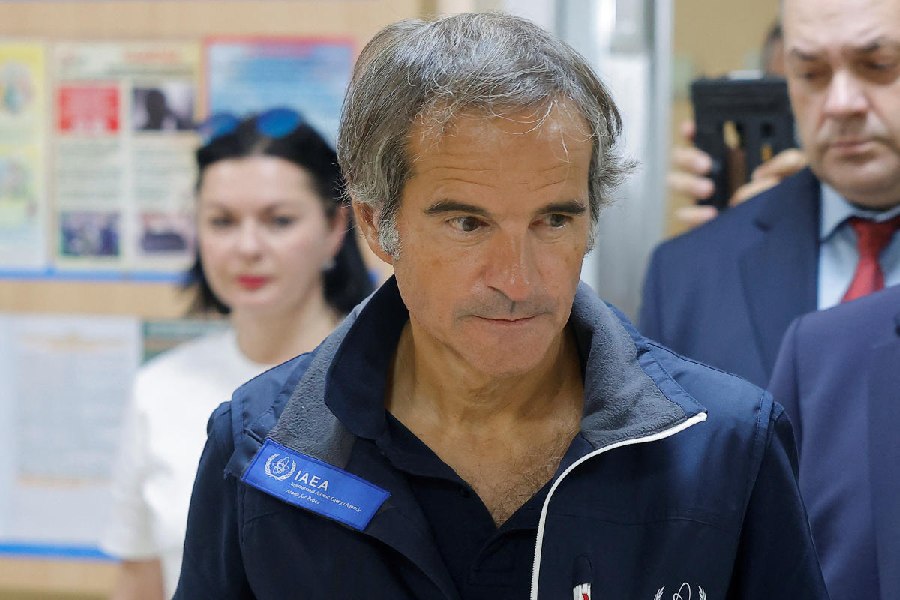 |
| A scene from Kohara (Picture by Sanjoy Chattopadhyaya) |
R arely do the individual forms of thriller and comedy mix in a theatrical performance, and Kohara, brought to Calcutta by Spandan (G.D. Birla Sabhagar, May 3), begs the question why such experiments are not tried out more often.
The play itself is not a new one. It was written by Harin Mehta over two decades ago and won rapturous applause on the Gujarati stage. But Naath Theatre’s Hindi adaptation is unique in that it manages to extract a funny yet controlled performance, without lapsing into the farcical, which is often the bane of Indian language drama.
There are obvious prototype characters like the blundering police officer and his sidekick ? played ably by Kaushal Shah. Their boisterous influence is handled well by director Babul Bhavsar, who is also seen in the play as the family physician, Dr Kapoor. But the star of the show is Rohini Hattangady, playing the irrepressible nurse Tanuja Bharbhare, who has a penchant for thriller paperbacks, stumbling across clues connected to the murders.
Hattangady revels in her role and the play cocks a snook at every stock device of the suspense genre. Scriptwise, Kohara doesn’t take itself too seriously even in performance. A triple murder, gunshots, dead bodies discovered suddenly, secret passageways ? all go a long way in making it a success.
When Mumbai’s Asmita decided to dramatise some of the real-life stories from Bitter Chocolate, Pinky Virani’s deeply disturbing book about child sexual abuse, the main problem, according to director Arvind Gaur, was to bring the pain alive on stage. He has overcome this by casting Lushin Dubey in the lead solo. Her captivating performance (Tollygunge Club, April 30), makes the sordid tales of abuse unfold. She portrays a child victim, mother of a victim, a psychiatrist, a policeman, a devil’s advocate and a host of other characters. She talks convincingly to the unseen ? chiding them, wiping their tears and abusing them.
What is out of place is the use of overhead projector images superimposed on a background screen to foreshadow events before each scene. This attenuated the poignancy of the dramatic moments in some of the scenes. Sangeeta Gaur’s music, based on Hindustani classical raga, set the tone of the play, reinforcing the idea of a distressing and depraved world.










